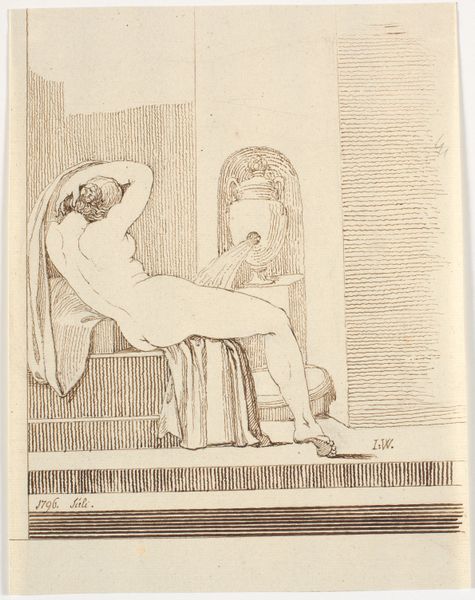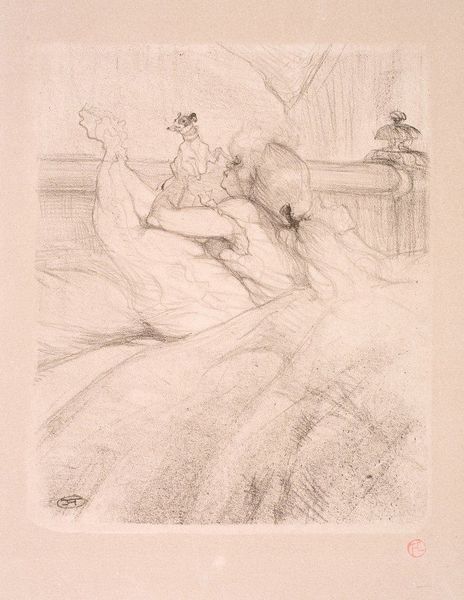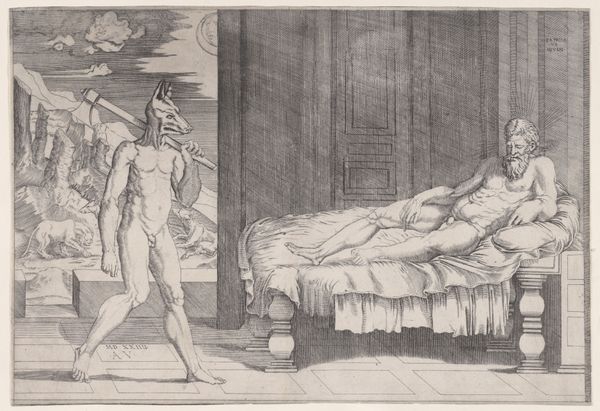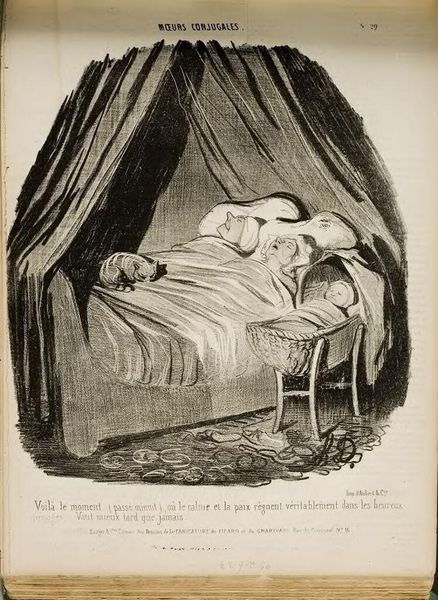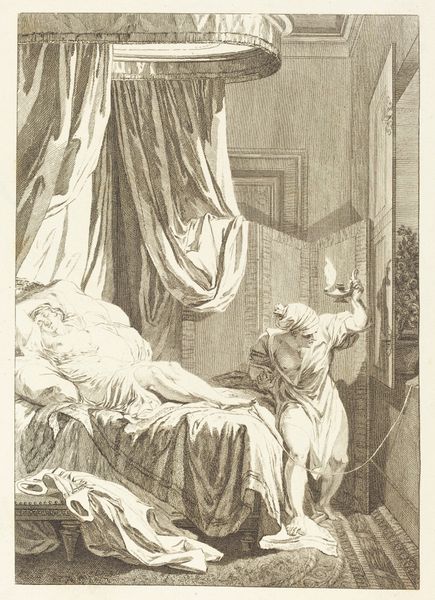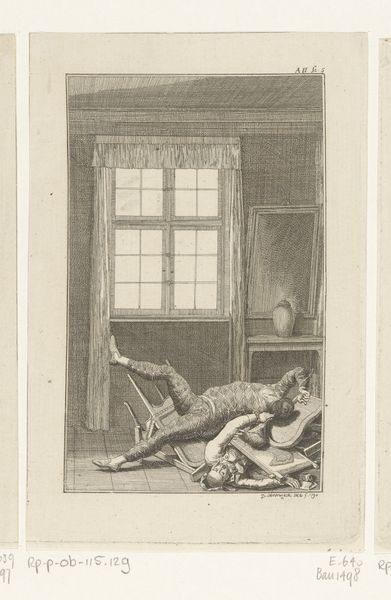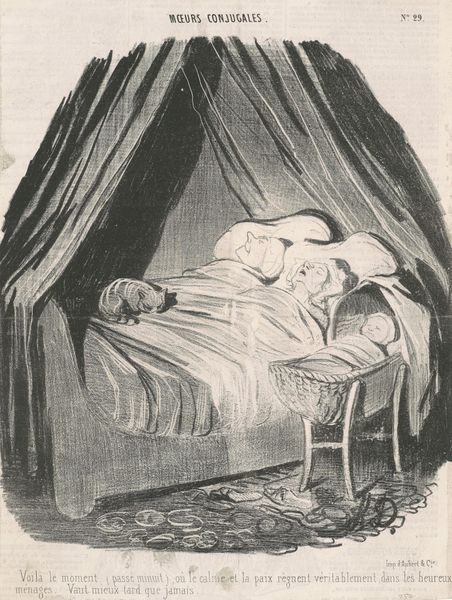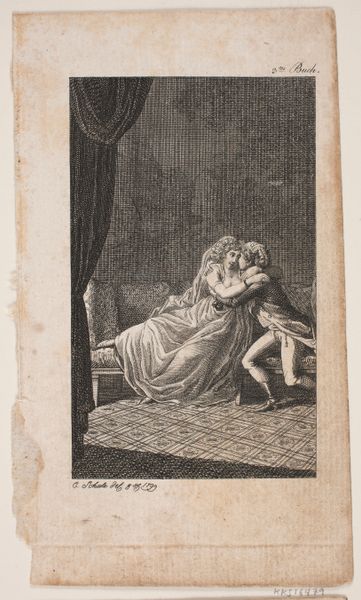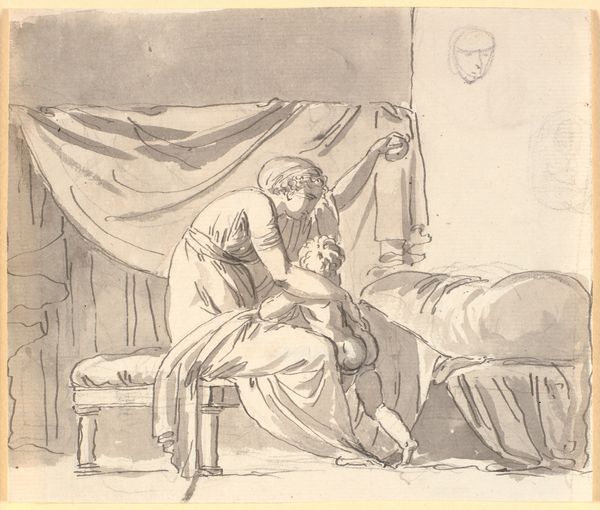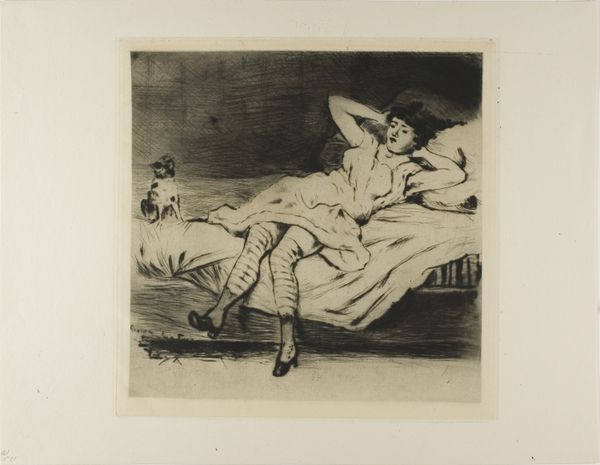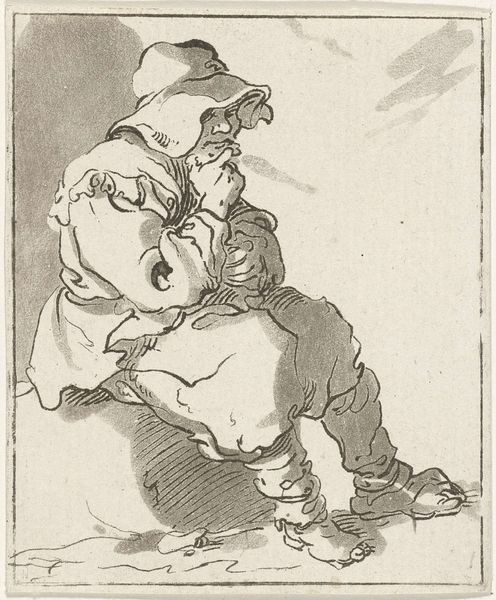
drawing, ink
#
drawing
#
ink
#
genre-painting
#
nude
#
erotic-art
Copyright: Public domain
Curator: Looking at "Sex position '69'", an ink drawing by Felicien Rops, one is immediately struck by its almost clinical precision. Editor: Clinical is definitely a word for it! It feels less about passion and more like a study, almost detached, despite the intimate subject matter. There is a stark contrast to the subject's supposed intimacy and sensuality and the clinical marks that are supposed to depict it, highlighting gender relations in fin-de-siècle. Curator: Absolutely. Rops was known for his exploration of erotic themes, often laced with a sharp, satirical edge, and here the rendering technique really underscores that. Editor: And the context of Rops’ larger body of work cannot be overstated. We are witnessing a blatant exploration of the female body as objectified and sexualized; not just exploring taboo or being titillating, but perpetuating specific social attitudes around sexuality in the public imagination. Curator: But doesn’t the style and period soften that critique somewhat? There’s a classical tradition being referenced even in something as outwardly scandalous as this. I feel a familiarity when I consider classical forms. Editor: While art may perpetuate those values, we cannot divorce that aesthetic continuity from those harmful attitudes when analyzing such artwork, instead of becoming an apologist for the piece. The female figure almost appears diminished, lacking agency. There are societal expectations, not merely expressions of desire. The composition speaks volumes about power. Curator: So, the symbols are less archetypal in your view, less universal, more tied to their specific social circumstances. I do still think about those archetypes and forms to convey specific cultural anxieties in that moment in time. Editor: To be honest, while recognizing the artist’s place, what I’m taking away is the unsettling way pleasure is represented here and for whom that pleasure is produced. I can see continuity of symbols with prior representations, but the difference in the gaze is more apparent. Curator: It is indeed a discomforting piece. Thank you for opening my eyes on this piece and how to better view it through context, because I feel more reflective as a result. Editor: Thank you for pushing me on a cultural and iconic interpretation to better illustrate and understand its place.
Comments
No comments
Be the first to comment and join the conversation on the ultimate creative platform.
